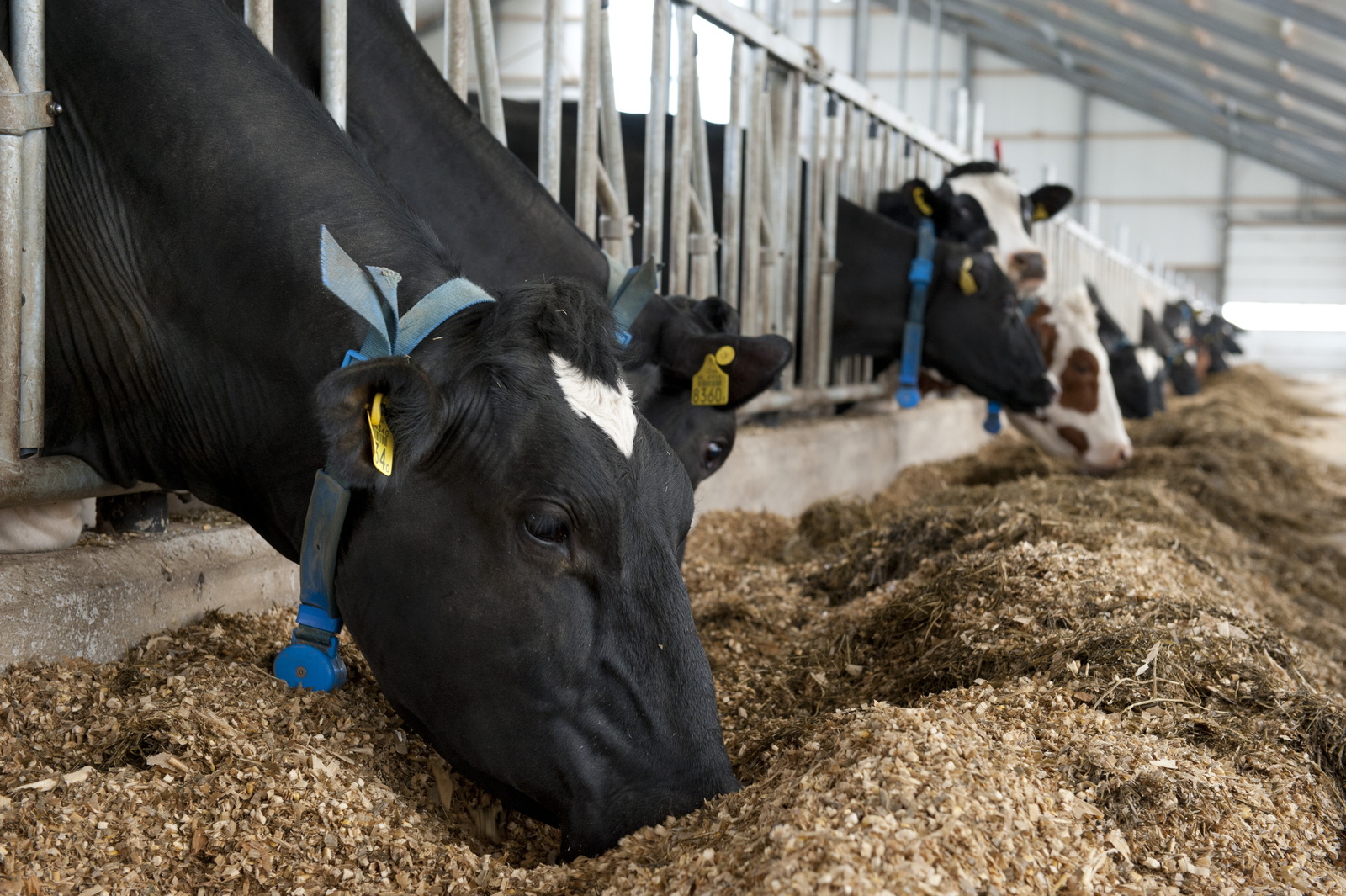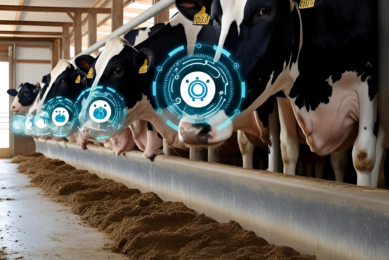Improving feed efficiency in ruminants with live yeasts

Rising feed costs, variable market prices, uncertain farm incomes, but an ever increasing demand for safe, high quality beef and dairy products, means that today’s primary producers recognise the pressing need for improved feed efficiency. This article reviews the use of live yeasts to improve digestive welfare, fibre digestion and as a consequence overall feed efficiency.
By F Chaucheyras-Durand1,2, A. Hall3, L. Dussert1
Lallemand Animal Nutrition, France1 ; INRA UR454 Microbiologie, France2; Lallemand Animal Nutrition, USA3.
Optimisation of rumen function improves animal efficiency. This digestive compartment hosts a complex anaerobic microbiota responsible for degradation and fermentation of animals’ dietary components. However, many factors can impair rumen function. In this context, direct fed microbials (DFMs) such as live yeasts are an important tool to improve feed efficiency and performance while preventing health disorders. Yeasts receive a positive consumer acceptance as they are not involved in health disorders and do not have any detrimental impact on the environment. Recent analyses in dairy and beef cattle have shown significant benefits with Saccharomyces cerevisiae I-1077 on yield and feed efficiency.
The authors address the mechanisms of live yeasts on rumen microbiota, focusing on pH stabilisation effect, improvement in plant cell wall degrading communities, and consequences on rumen efficiency, animal productivity and health.
Stabilising rumen pH
Intense microbial fermentation of feedstuffs in the reticulo-rumen leads to the production of VFAs and lactic acid, which may decrease ruminal pH. Low rumen pH for prolonged periods impairs feed intake, microbial metabolism, and nutrient degradation, and leads to acidosis, inflammation, laminitis, diarrhoea and milk fat depression. High producing cattle diets which are rich in readily fermentable starch or sugars at high feed intake levels are particularly susceptible to acidosis. It is recognised that sub-acute ruminal acidosis (SARA) affects intensive dairy cattle, resulting in significant financial losses and a major concern for animal welfare. Feeding high levels of rumen fermentable starch also leads to decreased fibre degradation.
Fibre-degrading bacterial species are particularly sensitive to low pH. Sauvant reported that a 1% DM increase in the diet of rumen degradable starch reduces rumen pH (-0.1 unit) and NDF digestion (-3%).
Rumen pH regulation is thus a key determinant in the maintenance of an optimal rumen function. Stabilisation of ruminal pH in the presence of live yeast is often reported. Increase in mean rumen pH, reduced time under a certain pH threshold, as well as reduction of the area under the pH curve have been measured in the presence of live yeast using indwelling pH boluses. Reductions in ruminal lactate concentrations have been observed with yeast in situ with dairy cows as well as in vitro in multiple studies.
Beneficial consequences
Bach and others reported in 2007 that the supplementation of live yeast strain SC I-1077 increased average rumen pH and average maximum pH by 0.5 units, and average minimum pH by 0.3 units of loose-housed lactating cows (Figure 1). In this study, a significant change was observed in the eating behaviour of the animals.
Cows supplemented with live yeast had a shorter inter-meal interval (3.32 h) than unsupplemented cows (4.32 h). The change in feeding behaviour could help in rumen pH recovery, or the beneficial effect of live yeast on pH stabilisation could induce a change in eating behaviour.
In a multi-study analysis in 2010, De Ondarza and others found that live yeast SC I-1077 supplementation improved milk yield by 1.15 kg/day (live yeast 34.19 kg/day vs control 33.04 kg/day). Nevertheless, no effect on DM intake was observed. Live yeast seems to have an effect on intake pattern rather than on intake per se. As a result, feed efficiency is improved in the presence of live yeast. Milk composition is generally not or only slightly affected by yeast supplementation.
Modes of action on rumen microbiota
Guedes and others reported in 2008 that S. cerevisiae I-1077 increased in situ NDF degradation (NDFd) of corn silage and other forages. In this study, cows were fed a grass corn-silage based diet and the rumen pH was not characteristic for SARA. However, it is noteworthy that a yeast effect was observed on pH and lactate concentration but the authors suggested that the yeast efficacy to increase NDFd was not only attributable to a pH stabilisation effect. Using the same technique, Chaucheyras-Durand and others studied in 2010 (unpublished) the effect of the same yeast strain on fibre degradation of different fibrous substrates and followed the kinetics of colonisation by fibre degrading bacteria and fungi using qPCR in rumen cannulated cows. In this study, the diet was composed of grass silage and hay and was not at risk of acidosis.
Results showed that the supplementation of S. cerevisiae I-1077 could promote substrate colonisation by cellulolytic bacteria (F. succinogenes, R. flavefaciens, B. fibrisolvens) and fungi but that the degree of stimulation was dependant on the nature of the substrate and on the microbial species (Figure 2).
One of the main factors implicated in the beneficial effect of live yeasts on fibre-degrading bacteria is probably the capacity of yeast cells to scavenge oxygen. Most ruminal microorganisms are considered to be highly sensitive to oxygen. Overall putative mode of action of S. cerevisiae I-1077 on fibre degradation in the rumen is depicted on Figure 3.
Feed efficiency
Generally a better fibre digestion is recognised to benefit the animal rumen health and its function by improved feed efficiency. De Ondarza and others concluded from a multi-analysis representing over 1,600 cows an average milk yield increase of 1.1 kg Fat Corrected Milk per day for the live yeast supplemented cows. The shorter intervals between meals of live yeast fed cows recorded by Bach and others suggests the fact that the TMR digestibility and digestive comfort were improved. The significant improvement of the rumen pH (6.05 vs 5.49) for the cows receiving the live yeast would also support a higher activity of the cellulolytic flora and thus explain the higher meal frequency.
Modelling the effect of specific live yeasts
Fibre digestibility is part of energy value of feed calculated in dairy models (CNCPS, INRA for example). As mentioned earlier, use of S. cerevisiae I-1077 will have an impact on fibre degradation directly through fibrolytic microflora enhancement but also indirectly through rumen pH stabilisation. Modelling this quantitative response on rumen pH and finally on fibre degradation will achieve the expected feed efficiency and income over feed cost (IOFC) in the main dietary situations, providing guidelines to farmers and nutritionists.
This article summarises an update of a presentation from Cornell Conference in October 2012.











